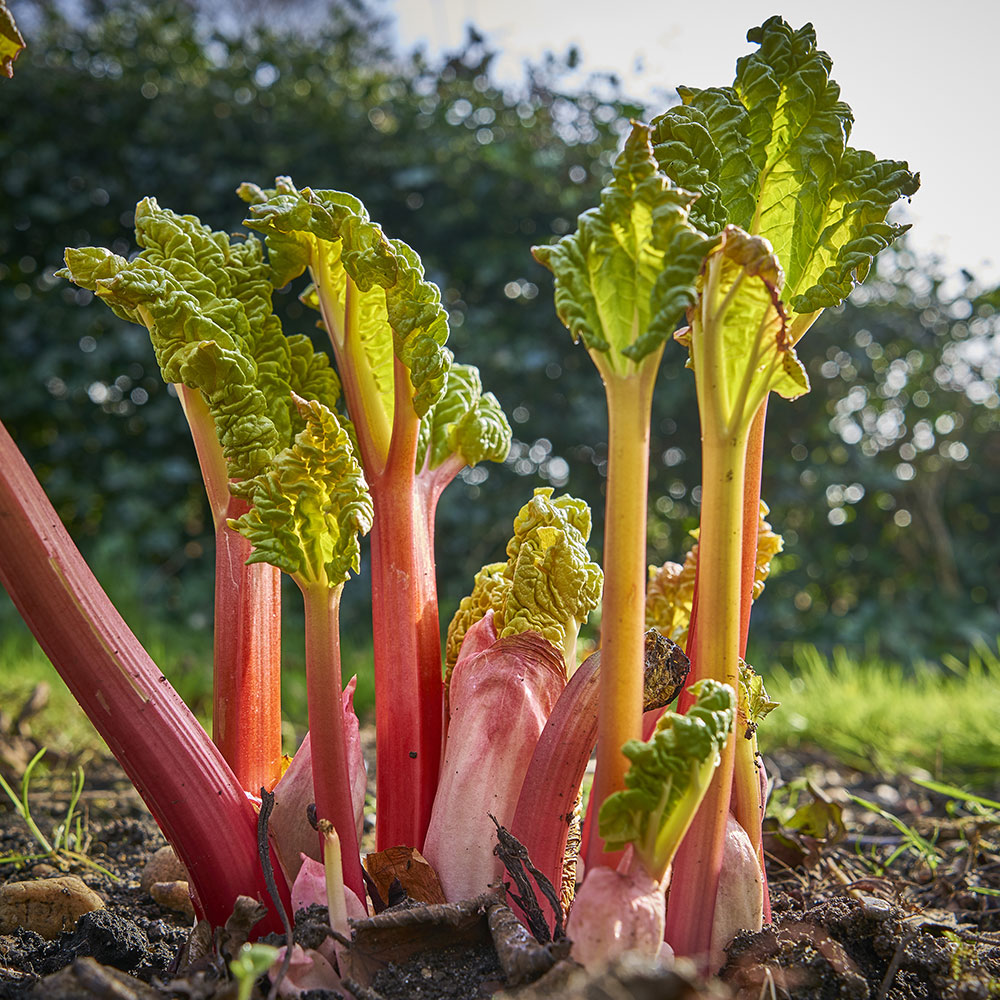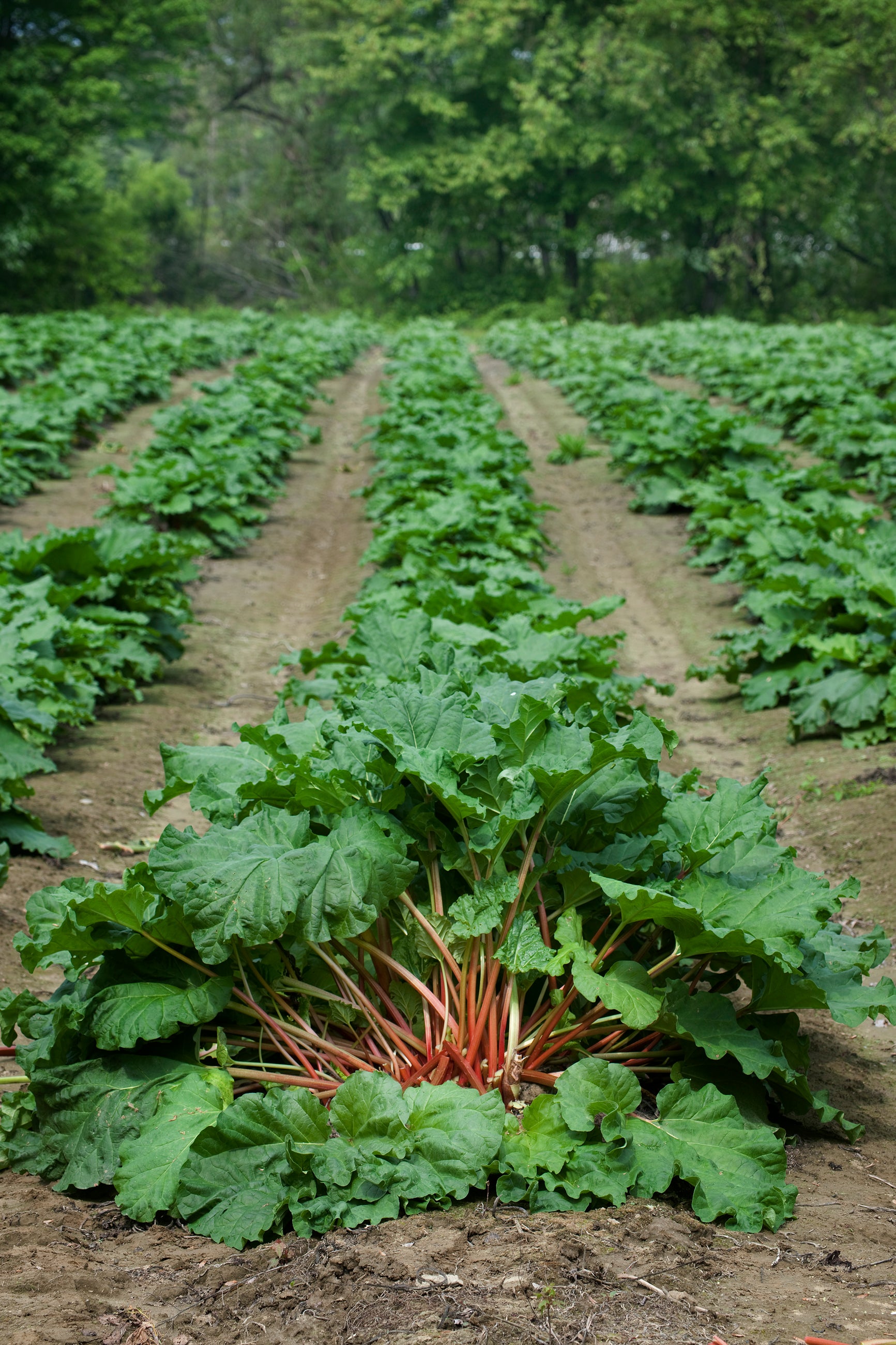The Wonderful World of Rhubarb: More Than Just Pie Filling
Rhubarb! Just the name might conjure up images of sweet and tart pies, crumbles, and maybe even a bit of childhood confusion about whether it’s a fruit or a veggie. Well, let’s clear that up right away. Botanically speaking, rhubarb is a vegetable. Yep, it belongs to the Polygonaceae family, which also includes things like buckwheat and sorrel. But when it comes to cooking, we often treat it like a fruit due to its tart flavor that pairs beautifully with sugar.
Rhubarb is a pretty hardy perennial plant, meaning it comes back year after year. It’s known for its large, dramatic leaves and thick, fleshy stalks that range in color from vibrant crimson red to speckled pink and even green. These stalks are the edible part we’re interested in. Just a super important heads-up: never, ever eat the leaves. They contain high levels of oxalic acid, which is toxic and can make you seriously ill. Stick to those stalks!
This plant is a cool-season lover and thrives in areas with cold winters and mild summers. That’s why you often see it popping up in spring. It’s a pretty low-maintenance plant once established, which makes it a favorite for home gardeners. Give it some well-drained soil, plenty of sunshine (though it can tolerate some shade), and enough water, and it’ll happily produce those tart stalks for you.

A Bit of Rhubarb History and Where It Comes From
Rhubarb has a pretty interesting history. It wasn’t always the star of desserts. Its origins trace back to Asia, specifically Siberia and parts of China. For centuries, it was primarily used for medicinal purposes. It wasn’t until the 18th century that rhubarb started to make its way into European kitchens, and even then, it took some time for it to become a popular food.
Different varieties of rhubarb have been cultivated over the years, each with its own unique characteristics in terms of color, stalk thickness, and flavor intensity. Some popular varieties you might come across include ‘Victoria’ (a classic red variety), ‘Canada Red’ (known for its deep red color), and ‘German Wine’ (a green variety with a milder flavor).
Growing Your Own Rhubarb Patch

If you’re thinking about growing your own rhubarb, it’s generally propagated by dividing crowns (the top part of the root system with buds). You can usually plant these in the early spring or fall. Give them plenty of space to spread out, as they can get quite large over time.
One of the cool things about rhubarb is that you shouldn’t harvest any stalks in the first year or two after planting. This allows the plant to establish a strong root system. After that, you can start harvesting in the spring and early summer. A good rule of thumb is to only take about one-third of the stalks at a time to ensure the plant continues to thrive. To harvest, simply pull the stalks gently from the base with a slight twisting motion.
Rhubarb in the Kitchen: Sweet and Savory Surprises
While rhubarb is most famous for its role in sweet treats like pies, crumbles, and jams, it’s actually quite versatile. Its tartness can add a unique zing to savory dishes as well. Think about incorporating it into chutneys, sauces for meats like pork or duck, or even adding it to salads for a bit of tang.

When you’re cooking with rhubarb, you’ll almost always need to add some kind of sweetener to balance its natural tartness. Sugar is the classic choice, but you can also use other sweeteners like honey, maple syrup, or even artificial sweeteners depending on your preference.
The Nutritional Side of Rhubarb
Beyond its culinary uses, rhubarb also offers some nutritional benefits. It’s a good source of dietary fiber, which is important for digestion. It also contains vitamin K, which plays a role in blood clotting and bone health. Additionally, rhubarb contains antioxidants, which can help protect your cells from damage. Of course, keep in mind that the nutritional profile of a rhubarb pie will be quite different from that of plain stewed rhubarb due to the added sugar and other ingredients.
Conclusion: A Versatile and Intriguing Plant
So, there you have it – a deep dive into the world of rhubarb. From its botanical classification as a vegetable to its historical journey and its surprising versatility in the kitchen, rhubarb is certainly more than just a pie filling. Its hardiness, unique flavor profile, and even its nutritional aspects make it a truly intriguing plant. Just remember to admire those big leaves from afar and stick to those delicious stalks!
Frequently Asked Questions About Rhubarb
Is rhubarb a fruit or a vegetable?
Botanically, rhubarb is a vegetable, belonging to the Polygonaceae family. However, in culinary terms, it’s often treated like a fruit due to its tart flavor and common use in sweet dishes.
Why are rhubarb leaves poisonous?
Rhubarb leaves contain high levels of oxalic acid, a substance that can be toxic if ingested in significant amounts. It’s crucial to only eat the stalks of the rhubarb plant.
When is the best time to harvest rhubarb?
The best time to harvest rhubarb stalks is typically in the spring and early summer, usually from April to June. Avoid harvesting too late in the season.
How do you store fresh rhubarb?
Fresh rhubarb stalks can be stored in the refrigerator for several days. Wrap them loosely in plastic wrap or place them in a resealable bag. For longer storage, rhubarb can be chopped and frozen.
Can you grow rhubarb in warm climates?
Rhubarb Plant